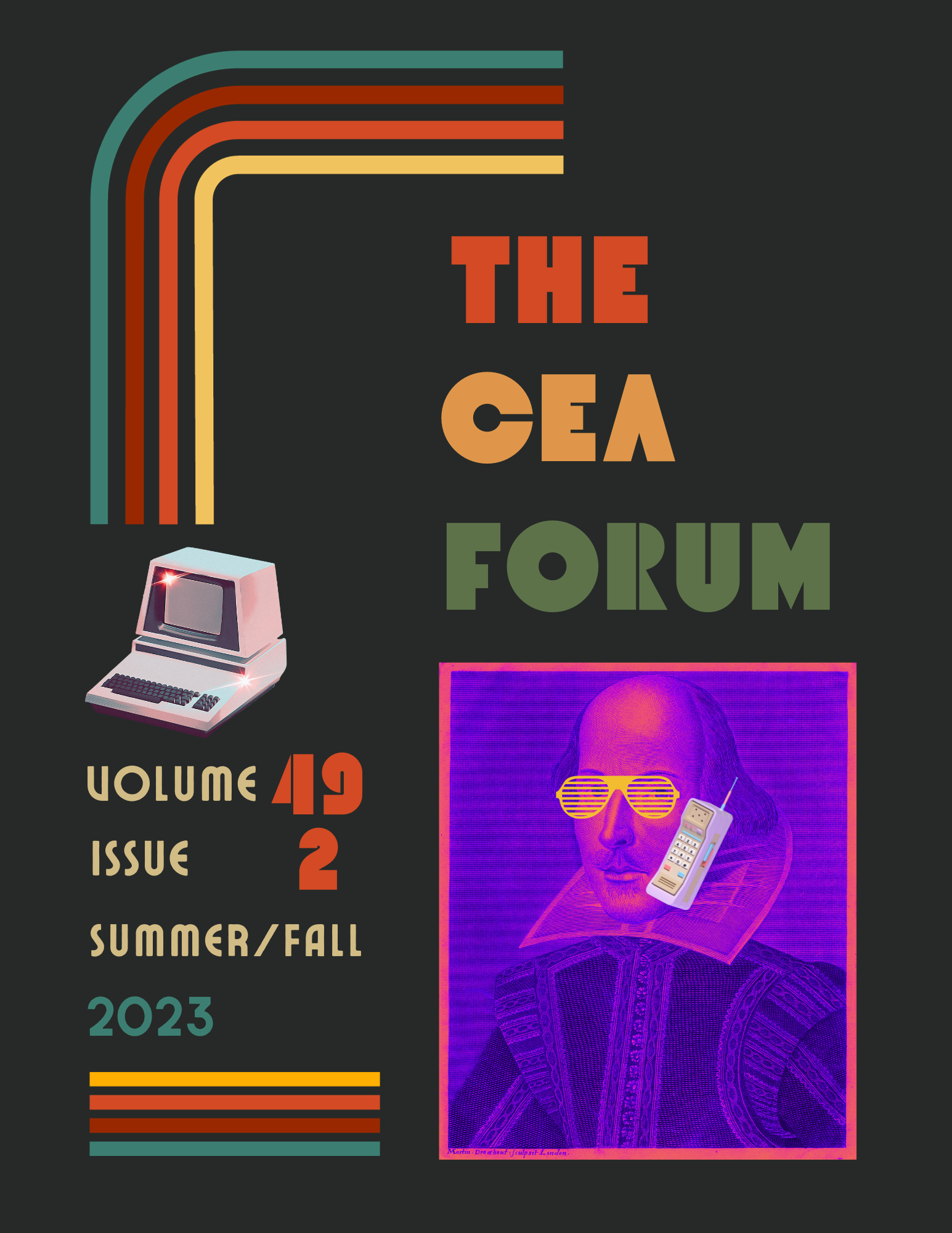Using Sentiment Analysis to Ease Students toward or around Macroanalysis
Keywords:
pedagogy, graphesis, sentiment analysis, reader-responseAbstract
"Using Sentiment Analysis to Ease Students toward or around Macroanalysis" introduces teachers to the mathematical analytical method currently being promoted by Matthew Jockers which he calls macroanalysis. This method uses an algorithm called "R," originally designed by researchers in sociology. In many ways, macroanalysis presents an approach to literary analysis that might seem to many traditionalists to run counter to our training as close readers or advocates of specific literary theories. Instead of focusing on specific elements in a limited number of texts, macroanalysis uses a computer to consume a huge number of literary works--more than a single human being could read in a lifetime--and collect a statistically significant amount of data, a search which has been programmed into the algorithm by the researcher. This use of a computer to do the reading for the researcher results in a new methodology which Jockers calls "distant reading" (a term he borrows from Franco Moretti). After providing an introductory discussion of macroanalysis, I turn my focus onto making a case for the advantages of using graphs to aid in classroom discussions of reading assignments. In the introductory discussion, I point out that one serious advantage that arises from Jocker's macroanalysis is how the "R" algorithm produces a variety of graphs that provide visual reinforcement for the statistical data it generates. Consequently, in the second section of the essay, I provide a justification for why it would be advantageous in a college or even high school discussion of a reading assignment to privilege visual presentations of student responses to the assignment. Once I've established the nature of macroanalysis, and how challenging it is for the average English major, I offer an alternative approach to creating graphs to clarify student responses. This alternative approach is a blend of "sentiment analysis" and reader-response theory. Essentially this approach can be used to ease students toward the more serious graphing features of macroanalysis, or it can function as a self-contained form of analysis without shifting to the difficult mathematics characteristic of macroanalysis. To prepare the readers for the rather lengthy discussion of a graph produced by a group of Virginia Governor's School students, I first provide a simple graph that shows my responses to the opening scene of Flannery O'Connor's short story "A Good Man Is Hard to Find." Having clarified how sentiment analyis, with the mechanical help of Microsoft Excel, can produce an engaging graph of emotional and intellectual responses that can be easily shared with the class, I then move to the last half of my essay--a detailed discussion of an actual student graph derived from a reading of Helen Klein Ross's What Was Mine which was much more sophisticated than the graph I created for the O'Connor story. Even though the students' graph was overly ambitious, the discussion of its visual dynamics demonstrate how even a faulty graph can teach students how to become close readers and appreciate the importance of analysis that is based on specific elements of the literature being analyzed.
Downloads
Published
Issue
Section
License
Authors who publish with this journal agree to the following terms:
1. Authors retain copyright and grant the journal right of first publication with the work simultaneously licensed under a Creative Commons Attribution License that allows others to share the work with an acknowledgement of the work's authorship and initial publication in this journal.
2. Authors are able to enter into separate, additional contractual arrangements for the non-exclusive distribution of the journal's published version of the work (e.g., post it to an institutional repository or publish it in a book), with an acknowledgement of its initial publication in this journal.
3. Authors are permitted and encouraged to post their work online (e.g., in institutional repositories or on their website) prior to and during the submission process, as it can lead to productive exchanges, as well as earlier and greater citation of published work.


